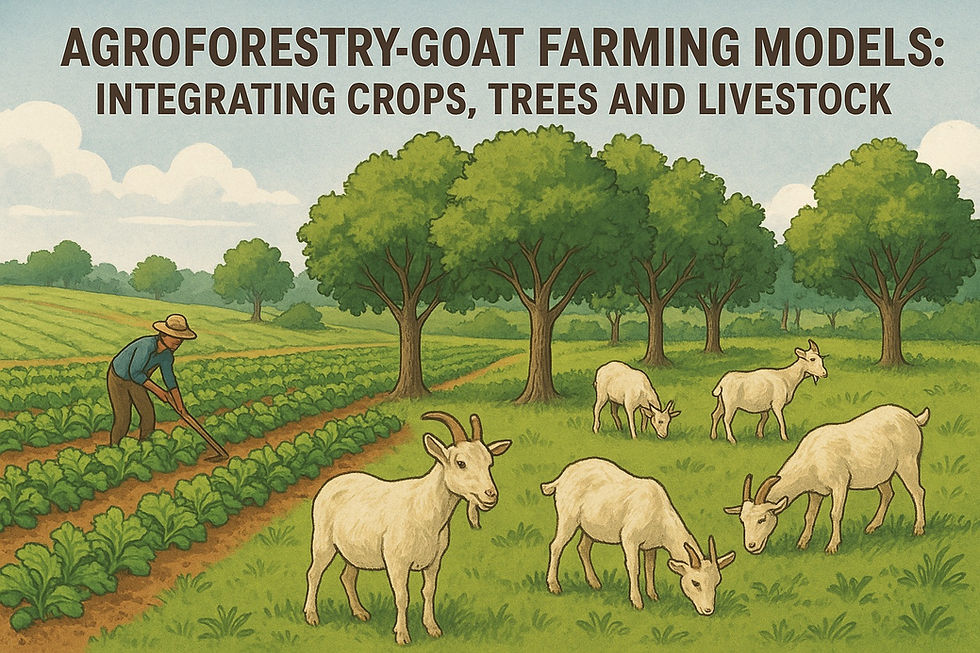Indigenous Poultry Farming in India: Status & Opportunities
- Global Services TGT
- Jun 3
- 3 min read
Updated: Jun 10
Indigenous/ backyard poultry farming in India has been a traditional livelihood activity for rural households for centuries. It plays a critical role in rural food security, income generation, and socio-cultural practices. Unlike commercial poultry farming, which focuses heavily on exotic breeds and intensive systems, indigenous poultry emphasizes low-input, free-range systems using native breeds adapted to local climates and disease challenges.
Current Status of Indigenous Poultry Farming in India
Contribution to Rural Livelihoods: Indigenous poultry is largely practiced by marginal and small farmers in rural and tribal regions. Birds are typically reared in backyard systems with minimal investment. They provide eggs, meat, and cash income, especially for women and landless farmers.
Breed Diversity: India is home to a wide variety of indigenous chicken breeds, each with unique features such as disease resistance, adaptability to harsh environments, and broodiness. Notable breeds include:
Aseel (Andhra Pradesh, Chhattisgarh): Known for fighting ability and muscular build.
Kadaknath (Madhya Pradesh): Popular for its black meat with medicinal properties.
Nicobari, Miri, Haringhata Black, and Naked Neck: Known for hardiness and adaptability.
According to the National Bureau of Animal Genetic Resources (NBAGR), over 30 recognized indigenous breeds are conserved across different agro-climatic zones.
Production and Productivity:
Egg production of indigenous birds is low, ranging from 50–100 eggs per year (4-8 per month), compared to 250–300 (20-25 per month) for commercial layers, which is around 5 times more than backyard farming
Indigenous birds mature later and have lower body weight, but are more disease-resistant and require less veterinary care.
Backyard systems contribute to about 20% of the total poultry population, but a much smaller share to the total egg and meat output.
Government Support & Policies: Various initiatives by the Government of India, such as:
National Livestock Mission (NLM)
Backyard Poultry Development under RKVY and NRLM
National Egg Coordination Committee (NECC)
These programs support breeding, vaccination, and marketing, but outreach remains limited.
Opportunities for Growth
Genetic Improvement: Selective breeding and crossbreeding programs can enhance the productivity of indigenous breeds without compromising their adaptability. Institutions like ICAR and CARI–IVRI have developed improved strains (e.g., Vanaraja, Gramapriya, Kuroiler) suited for backyard rearing.
Value Addition and Niche Markets:
Indigenous poultry meat and eggs are gaining popularity among health-conscious consumers.
Kadaknath and similar breeds command premium prices due to their nutritional and medicinal qualities.
Branding and GI tagging (e.g., Kadaknath) offer opportunities for rural entrepreneurship.
Integration with Organic and Sustainable Farming: Indigenous poultry aligns with sustainable agriculture practices. Birds are reared on organic feed and contribute to pest control and soil fertility in integrated farming systems.
Women Empowerment and Livelihood Security: Women play a pivotal role in backyard poultry management. Targeted training, microfinance, and cooperative models can enhance their income and decision-making power.
Digital and Market Linkages: Access to digital platforms for veterinary advice, weather alerts, and market prices can improve decision-making for rural poultry farmers. E-commerce and local cooperatives can help in aggregation and marketing.
Challenges
Low productivity and a long maturation period.
Limited access to veterinary care, quality feed, and extension services.
High mortality due to predators, disease outbreaks, and poor housing.
Lack of an organized market for indigenous products.
Indigenous poultry farming in India holds immense potential for inclusive rural development, nutrition, and biodiversity conservation. With appropriate interventions in breeding, health care, value addition, and market linkages, it can be transformed into a viable and sustainable livelihood option. Policies should focus on empowering smallholders and integrating indigenous poultry into mainstream agricultural and rural development strategies.



Comments